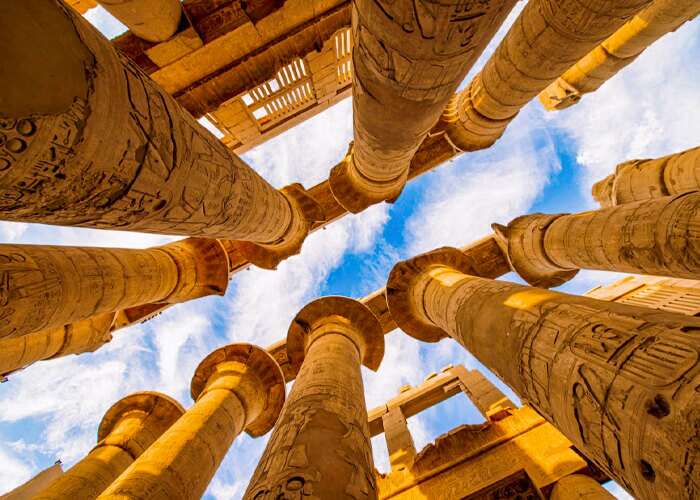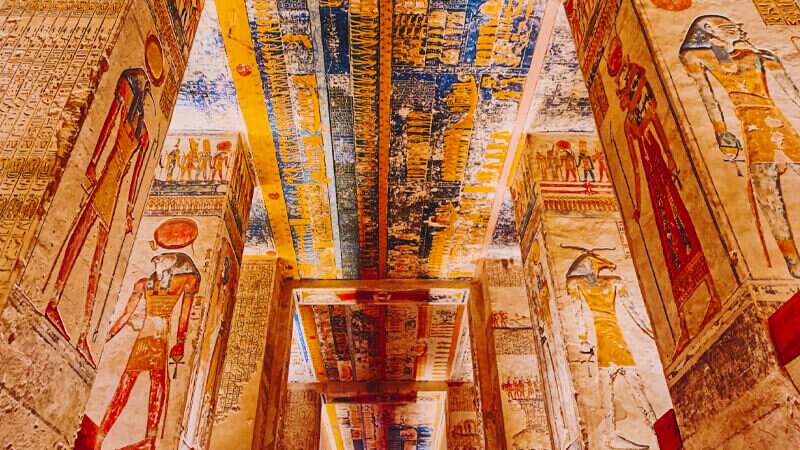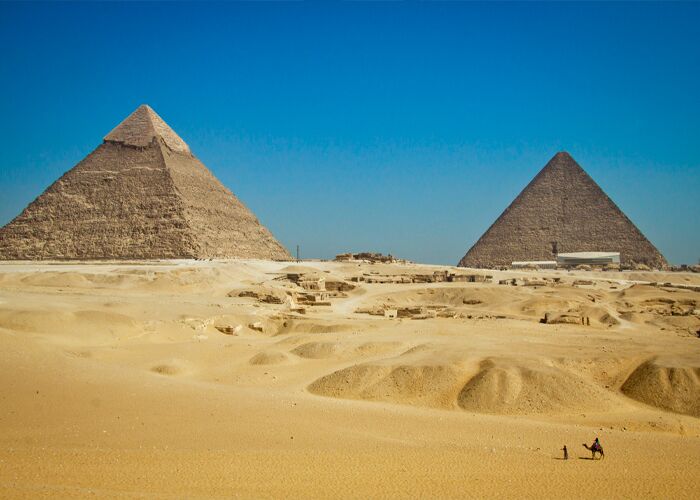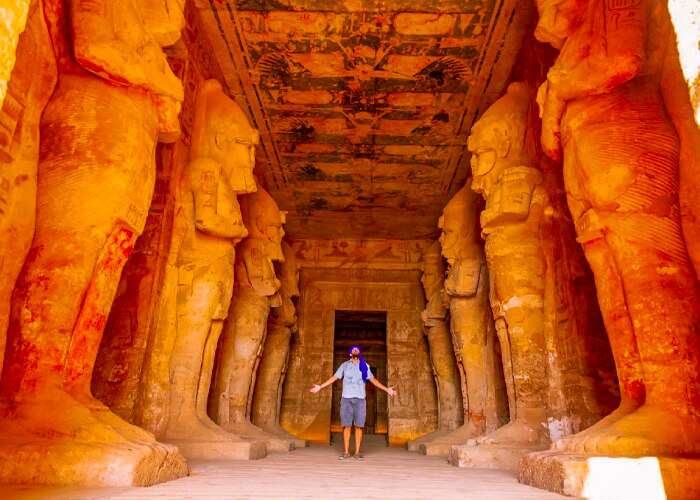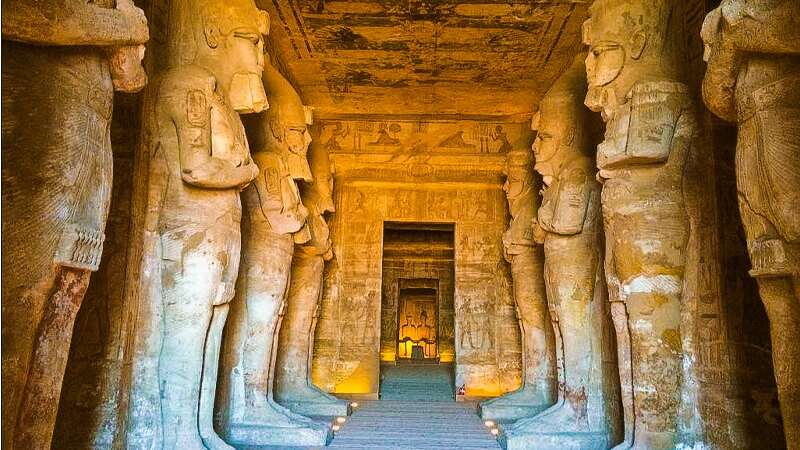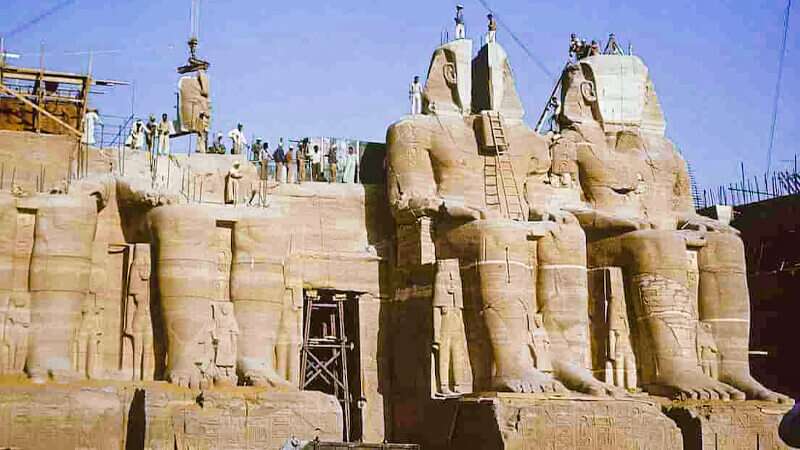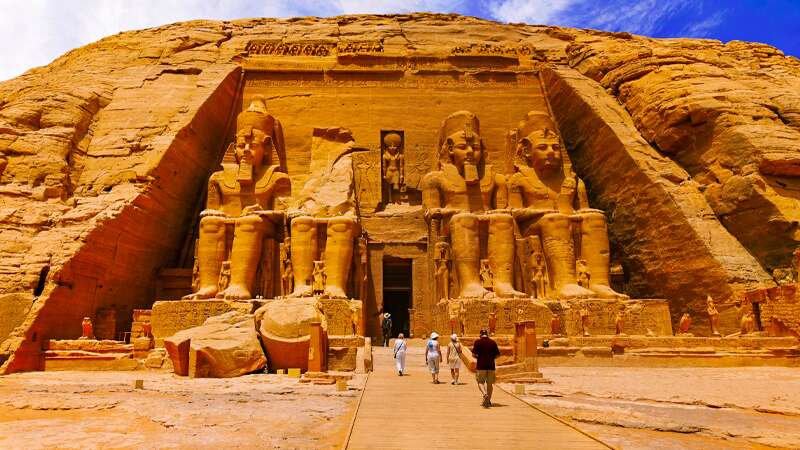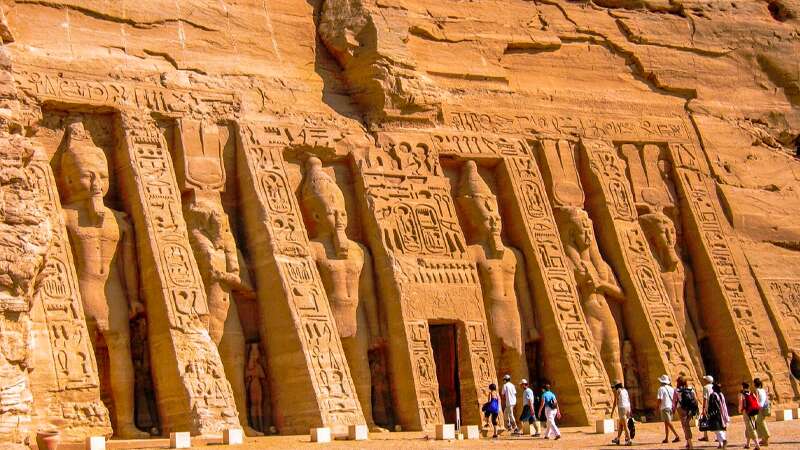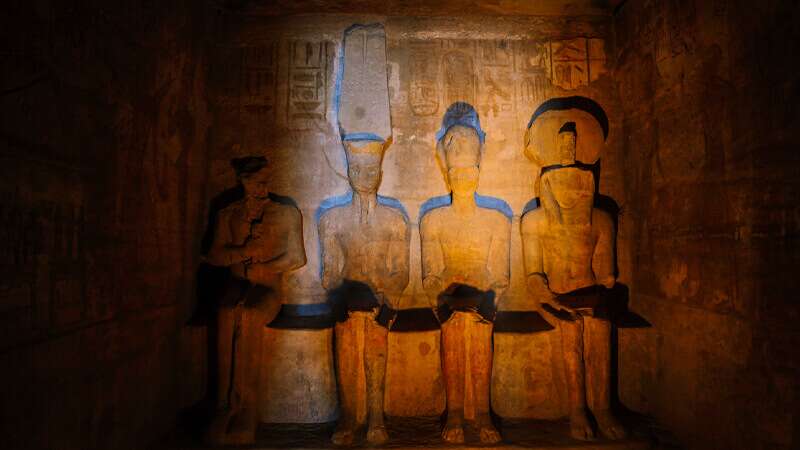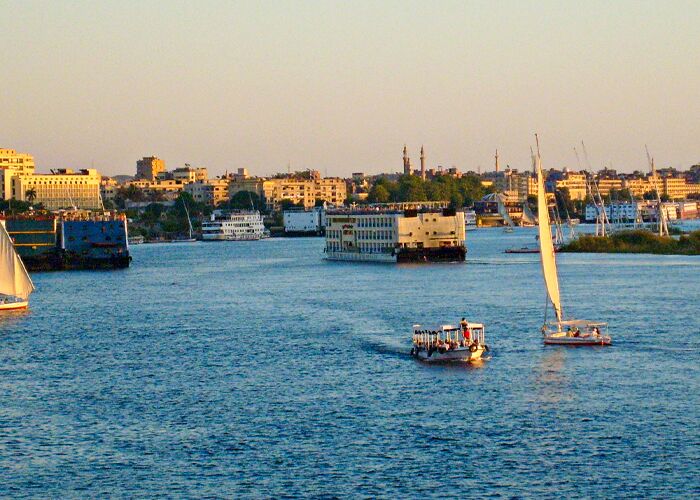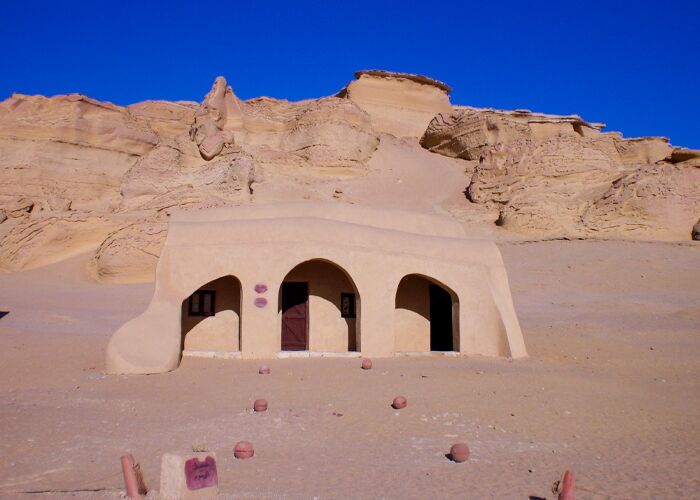The history of Luxor Egypt
In the New King Kingdom, Luxor (Thebes) served as Egypt’s capital and was referred to be the “Glorious City” of the divinity Amon-Ra.
In ancient Egyptian mythology, Luxor was referred to be Amon-“Glorious Ra’s City.”
After the 11th Dynasty, Luxor grew from a small town to a bustling city.
It was known for its high social status and elegance, as well as its role as a hub of knowledge, art, religious hierarchy, and political authority.
The city became a booming center of wealth, not just in Egypt, but across the world, in a short period of time.
During the 18th Dynasty and into the 20th Dynasty and beyond, Luxor played an important part in disbanding and
eradicating the Hyksos’ invading soldiers in Upper Egypt, establishing itself as a prominent center of power in terms of political, religious, and military authority.
Egyptian Christianity was centered there until the end of the Greek period.
There was Luxor Temple devoted to Amon, who was worshipped with his wife Mut and their son Khonsu (also known as the Moon God),
who was revered by them all.
It was only natural that when Luxor, Egypt’s principal focal point and metropolis, grew in importance and devotion, the God Amon was linked to the sun God Ra,
creating the new ‘King of Gods,’ Amon-Ra.. His colossal temple at Karnak, north of Thebes, was regarded as Egypt’s most important until the end of antiquity, and it still is today.
until the end of the Greek period, it was Egypt’s religious hub.
Luxor adored the God Amon, who was accompanied by his wife, Mut, and their son Khonsu, known as the God of the Moon.
Because Luxor became Egypt’s principal focus point and metropolis, the God Amon acquired importance and worship, and he was linked to Ra,
culminating in the formation of the new ‘King of Gods,’ Amon-Ra,
Karnak, north of Thebes, was regarded as Egypt’s most important temple until the end of antiquity, and it remains so today.
What to see in Luxor?
Temple of Karnak:
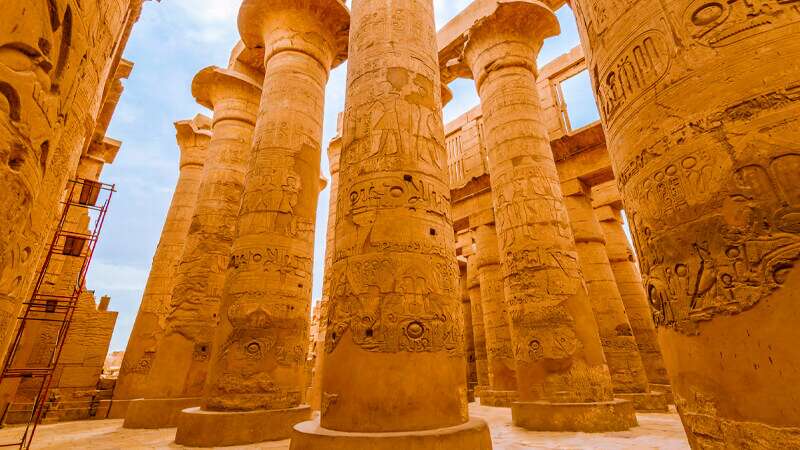
This archaeological temple is located on the eastern bank of the Nile, specifically in Luxor, which in Pharaonic times was called “Thebes”, or “the fortified city”,
which was known as “Abit Rust”, meaning the most prestigious and revered place.
In the past, the Karnak temple was known as “Bar Amun”, meaning the house of Amun, the god of the sun and fertility. In the Middle Kingdom, the area around Karnak
was called “Ebit-Isut”, meaning the most chosen one, because it was the main place of worship of the god Amun, and this was found. The name is engraved
on the walls of the “Senusret I” cabin, and many other names were taken, including “Nisut-Tawa”, meaning the throne of the two states, and
with the advent of the Arabic language, it was distorted to become “Karnak”. Karnak Temple is the second largest ancient religious complex in the world after the Temple of Angkor Wat in Cambodia is the second most visited historical site in Egypt, after the Pyramids of Giza.
It consists of four main parts: the courtyard of “Amun-Ra”, the province of “Mut”, the province of “Monto” and the temple of “Amenhotep IV” that was dismantled,
in addition to a few small temples and sanctuaries that connect the province of Mut, the Temple of Amun-Ra, and the Luxor Temple.
The “road of rams” represents the main gate of the temple, which is two rows of statues for a group of rams, it was called in the old way “Wat Nather”,
on its sides there are 1200 statues in the form of a sphinx with a ram’s head, that head symbolizes the god Amun, placed in this way as a type From the protection of the temple,
and at the other end of the road of rams, there is another great edifice, the Luxor temple
Karnak includes more than one temple, including the temple of the god Amun-Ra, the god of the sun, wind, and fertility.
And in the heart of Karnak is the “holy lake”, that lake that is still considered one of the secrets of the Pharaohs, with its steady water that does not dry out throughout the year,
despite its distance from the Nile River, and despite the passage of 3 thousand years of its existence, and strangely enough,
it does not dry out despite the factors of loss, evaporation, and leakage. Even the women of Luxor have come to believe in its sanctity, and they go to it to seek blessings from it.
It served as a treasury, an administrative center, and a palace for the pharaohs of the modern state.
The temple contains an exhibition in which there are various arts of construction, sculpture, and engraving and a long record of historical events in ancient Egypt.
The Great Karnak Temple features enchanting sound and light shows every evening, which is a great way to discover Karnak Temple.
Valley of the Kings:
The Valley of the Monarchs’ Tombs is the world’s most renowned historical tombs, where pharaohs buried their kings for 500 years.
Valley of the Kings is located in a dry river valley on the west bank of the ancient city of Thebes (modern Luxor), thus the name. However, this name is not totally true.
because certain members of the royal family other than monarchs, as well as some non-royal, but high-ranking persons, were buried there
The Valley of the Kings is separated into two valleys: eastern and western. The eastern section is the most well-known.
where the western valley has a few tombs and the Valley of the Kings has almost sixty tombs in total
including twenty unfinished tombs that are little more than holes
This location for kings’ burials was carefully picked; it lies on the Nile’s western bank since the sun deity descends there (dies)
The West was related to burial beliefs since people died on the western horizon in order to be resurrected and rejuvenated on the eastern horizon.
For this reason, ancient Egyptian tombs were often found on the Nile’s western bank.
The valley was not chosen at random to create royal tombs. The pyramid represented resurrection and endless life.
and the pyramidal form was thought to be a divine sign. Hathor, the “Lady of the West,” ruled over this region and the top itself.
So far, around 63 tombs have been unearthed in the Valley of the Kings, including royal and non-royal graves.
Luxor Temple:
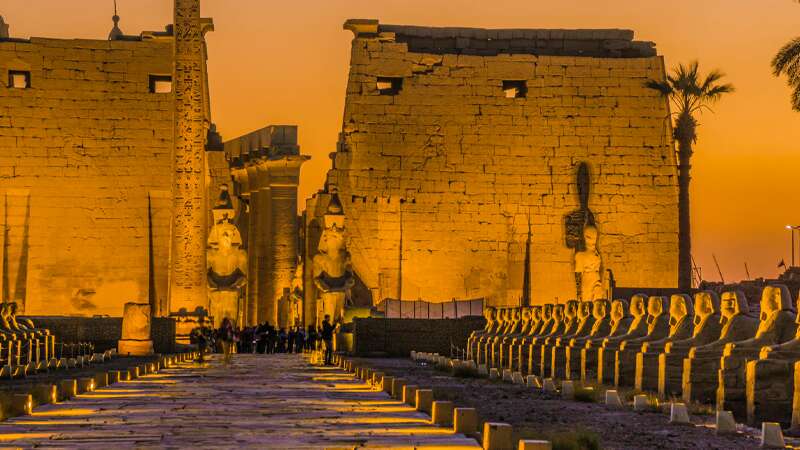
Luxor Temple is roughly three kilometers south of Karnak Temple, which was previously linked by a pedestrian route studded with sphinxes.
This temple’s earliest evidence goes back to the Eighteenth Dynasty (about 1550 – 1295 BC). The Egyptians of antiquity
Because of its position within ancient Thebes, the Luxor Temple was dubbed “Ebit Rasit,” which means “the southern sanctuary” (currently Luxor).
The temple was built in the early 1400s. The Holy Trinity was created to honor the deity Amun, his wife Mut, and their son, the god Khonsu.
Then, on the remains of the ancient temple, King Amenhotep III, one of the most significant and notable rulers of the nineteenth dynasty, ordered the construction of the Luxor Temple.
The whole temple was constructed between the eighteenth and nineteenth dynasties.
A path leading to the shrine is lined on both sides by sphinx sculptures called (The Road of Rams).
This route goes back to the time of the Thirtieth Dynasty King Nectanebo I. This path links Luxor Temple with Khonsu Temple.
Karnak temples are found here. This route superseded the rams’ road, which goes back to King “Amenhotep III’s” reign.
who discovered various monuments carrying his nickname at the Khonsu temple’s southern gate Two stone obelisks predate the structure constructed by King Ramses II.
The western obelisk was moved to Paris’ Place de la Concorde (where Muhammad Ali Pasha presented it to France), while the eastern obelisk remains in its original location.
in front of the edifice’s northern tower
Medinet Habu:
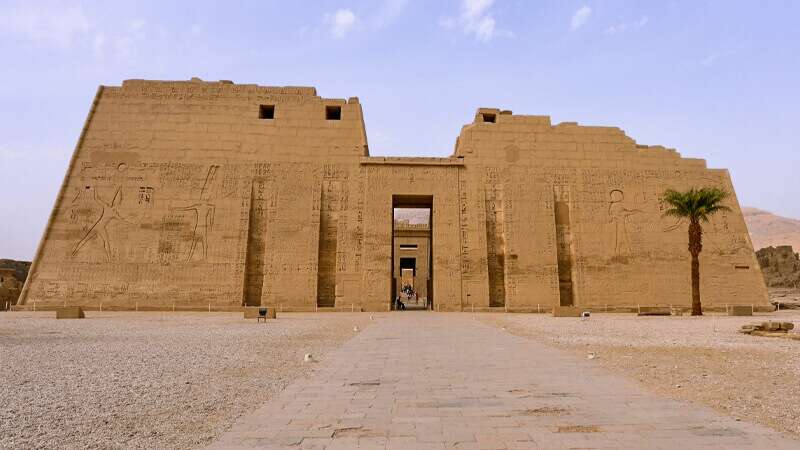
His superb museum has a carefully picked and wonderfully exhibited collection. Explained antiquity collection extending from the end of the Old Kingdom to the Mamluk era,
mostly from the Theban temples and necropolis
Several treasures may be seen on the ground floor gallery, including a well-preserved limestone relief of Tuthmosis III and an excellently carved figure of Tuthmosis III in greywacke.
Amenhotep III is enshrined at the Temple of Karnak, guarded by the mighty crocodile deity Sobek. One of the rare surviving specimens of Old Kingdom art
A relief of Unas-ankh was discovered in his tomb on the west bank of Thebes.
In 2004, a new wing was devoted to Thebes’ splendor during the New Kingdom era. The highlight and primary cause
The two royal mummies for the new structure are Ahmose I (beginning of the 18th dynasty) and the mummy some believed to be Ramses I.
(founder of the 19th dynasty and father of Seti I), wonderfully exhibited in gloomy chambers without their wrappings
The military motif is softened on the top floor with representations from normal life depicting New Kingdom technology.
Workers collect papyrus and prepare it into sheets for writing in multimedia displays. Young boys are depicted reading and writing.
Write hieroglyphs alongside the development of scribes and architect’s equipment.
A little chamber on the left, immediately before the exit, houses 16 of the 22 sculptures discovered in Luxor Temple in 1989.
All of these ancient Egyptian statues are beautiful. Still, a nearly new 2.45m-tall statue takes pride of place at the far end of the hall.
Amenhotep III wearing a pleated kilt in a quartzite statue.
Tombs of the Nobles:

The tombs of the nobles, west of the Nile, in the city of Aswan, have a special nature that is unique to them from the rest of the tombs of the ancient Egyptians,
and there are 50 cemeteries that include the remains of the rulers and princes of Aswan during the ancient and middle ages, says the director of the Aswan and Nubia Archeology Area
Nasr Salama that the most famous tomb is the tomb of Haqail, who ruled Aswan during the era of the Old Kingdom.
He is considered one of the most famous rulers of Aswan during different ages and has his own cabin
On the island of Elephants (Elephantine), it is called the Haqayel cabin, and it contains a distinguished group of statues of it. During the era of the Middle Kingdom,
Hazael was considered one of the very sacred figures. Salameh indicates that the tombs of the nobles were built on two levels, one above the other,
and distinguished from any other Pharaonic tombs because it was built on the foot of a mountain and directly overlook
the Nile and by comparing it with the tombs of the western mainland in Luxor, which is quite far from the Nile and almost in the desert for
the tombs of the nobles that were carved at the foot of a rocky mountain. And the carving in the heart of the mountain is a steep vertical slope.
He said that the ancient Egyptian considered the cemetery more important than the house in which he lived because he believed that life was divided into three parts,
and the least part of them he lived on the surface of the earth, followed by the one who spent in the cemetery, and so he was interested in preserving his body in a safe place,
for his belief That the soul, upon its return, identifies with the body in which it lives, and through it, the merger between the soul and the body occurs, and it revives again
To live his eternal life, when entering the cemetery, we find a group of various inscriptions and drawings that represent the work of agriculture and the most important
and favorite events that characterize his life and that he is proud of, and what he enjoys in the other world. The nobles have wells with a depth of
more than 10 meters and at the bottom of the well, the mummy is placed with the corpse inside. But you may wonder how the well was dug and how the coffin and
the corpse were lowered across the Nile to the bottom of the well. This indicates that the ancient Egyptians had a unique genius in dealing with stone
and various materials the archaeologist Nasr Salama said that the tombs open for visits are only five out of the fifty, indicating that in cooperation
with foreign archaeological missions working at the site, one or two cemeteries will be opened every season to double the number of open cemeteries.
Colossi of Memnon :
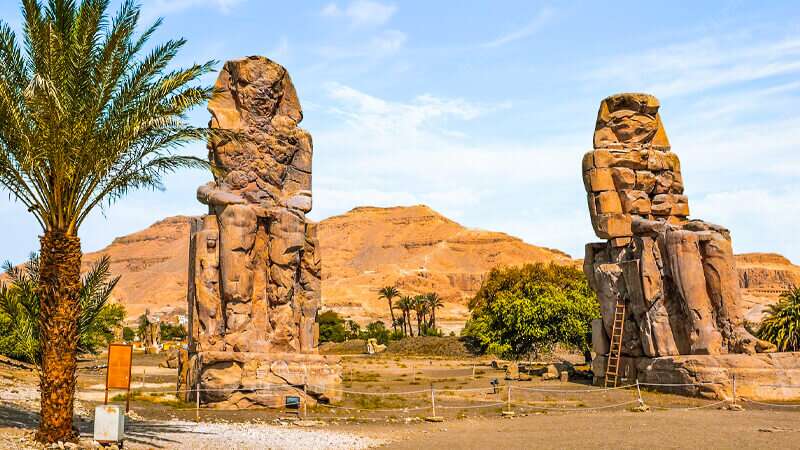
The statues of Memnon are unknown to our time, and the statues of Memnon belonged to Amenhotep III, one of the kings of the Eighteenth Dynasty.
This family is considered one of the most powerful families that ruled Egypt in ancient times. Because they are the first things that tourists see when they visit Luxor,
and each piece of the Colossi of Memnon weighs about 1,000 tons.
The Statue of Memnon is a pair of giant statues made of stone. The statue of Memnon was built in the fourteenth century BC, during the reign of Amenhotep III,
one of the kings of the ruling dynasty in the fourteenth century. The statue of Memnon is about 65.60 feet high. It is worth mentioning that the statues of Memnon
were made of Quartzite sandstone, and this stone is extracted from the Red Mountain or Jabal al-Silsila, the stone was transported to Luxor by land,
and the statues of Memnon Amenhotep III and his wife Queen Tiye are shown sitting with their hands resting on their knees, facing the Nile in the east.
The statue of Memnon was named by this name at the end of the first century BC, and legends say that the reason for naming the statue of Memnon
this name comes from the name of the Greek hero Memnon, who was king of Ethiopia at this time. The Greek hero Memnon was killed by Achilles
in the Battle of Troy and due to the courage of Memnon Memnon, which made him a hero in the eyes of the Greeks and Greeks, they saw that
the statue of Memnon was associated with this legend and had nothing to do with Amenhotep III and his wife, and the sayings of Egyptian historians
have multiplied that Amenhotep III and Memnon are the same people.
The statue of Memnon was famous for its sunrise singing, and the sunrise singing was a mysterious sound emitted from
the statue of Memnon daily at sunrise. Scientists and researchers believe that this sound is caused by the air that passes through the pores of the stones in the two statues,
but it is just a guess. On this talk to this time.
It is worth noting that the Roman Emperor Hadrian and his wife Yebina, had come to Egypt and spent several days next to the statue of Memnon to enjoy their singing,
and many historians were also keen to write their names and notes on the statue of Memnon, and there are eight names of Egyptian rulers
in the Roman era recorded on the statue of Memnon.
Ramesseum Temple:
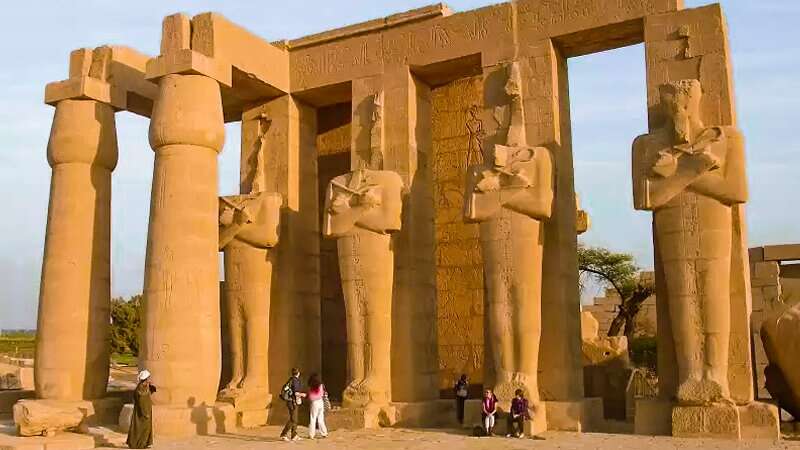
Luxor Governorate is famous for the many temples that were built on its land when it was the capital of ancient Egypt for thousands of years. However,
among those temples, what was a witness to the glories of the Pharaohs in wars and the aggressors responded to the aggressors from their holy lands.
King Ramses II ordered the construction of the Temple of Ramesses in order to show the greatness and status of Ramses II among the ancient kings
The Ramesseum is one of the funerary temples that were built for the dead in ancient Egypt.
It includes a number of huge statues of King Ramses II and a number of inscriptions that tell the nature of life in that period of the Pharaonic state.
Currently, the remains of huge statues and columns, part of which were destroyed during the last period
The temple is surrounded on three sides by corridors and storerooms with vaulted ceilings of mud bricks with some stone architectural elements,
and they were used most likely to store grains, clothes, leather, oil pots, wine, and beer, including what contained two rows of legends
and is believed to belong to priests and employees.
Valley of the Queens:

The valley is located near the famous Valley of the Kings, on the west bank of the Nile River in Luxor Governorate (Old Thebes) in Egypt.
The ancient Egyptians believed that the cave gave the dead another life.
The Valley of the Queens consists of the main valley, which includes about 91 cemeteries, in addition to subsidiary valleys that include 19 other tombs,
such as Wadi Prince Ahmose, Wadi Habl, and Wadi Dolmen.
Tomb of Queen Titi:
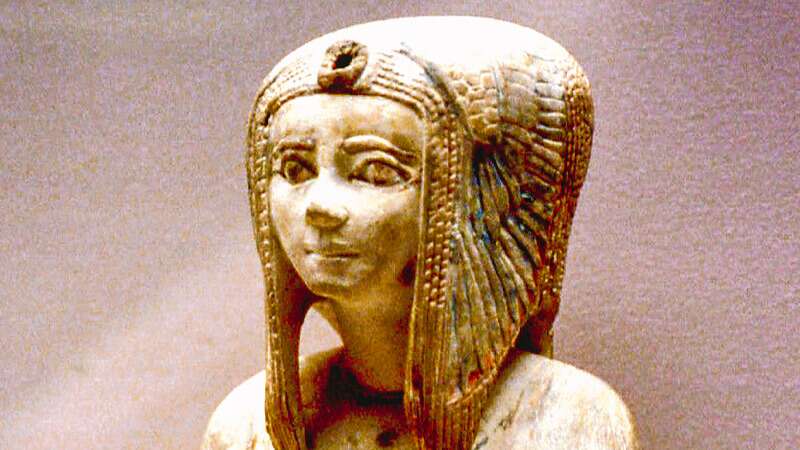
The tomb was recently opened, and the inscriptions on its walls depict the fields of “yarrow” or paradise as depicted by the ancient Egyptians,
in addition to mummification rituals and the sacred journey to eternal life.
A burial pit was excavated in the inner chambers and excavations yielded a variety of funerary furniture, including coffins and personal items.
Luxor Museum :
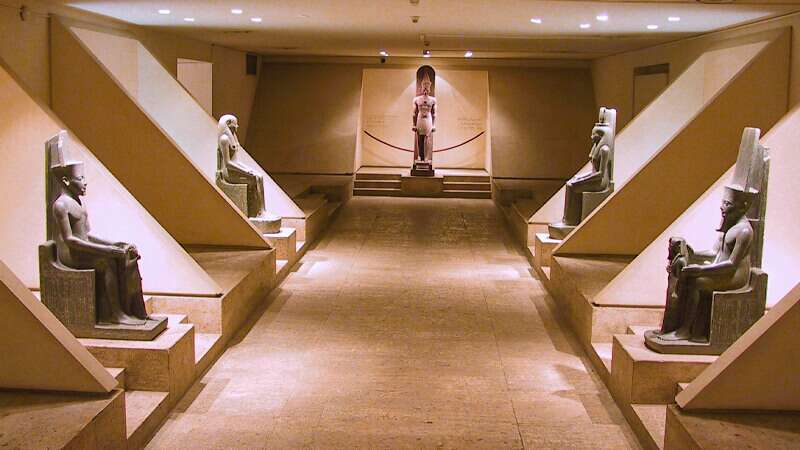
The Luxor Museum is located on the Nile Corniche in Luxor and is considered one of the most beautiful museums that include many rare artifacts discovered in Luxor,
such as statues of kings and gods, in addition to many collectibles dating back to various historical periods of Egyptian history. The museum also displays
some of King Tutankhamun’s holdings. Which was discovered in the Valley of the Kings in Luxor in 1922.
The museum was opened to visitors in 1975 by the late Egyptian President Anwar Sadat, accompanied by former French President Valéry Giscard d’Estaing.
It consists of a garden with four large statues and a two-story building divided into six halls displaying about 2,200 artifacts covering ancient Egyptian times,
including the Pharaonic, Greek, Roman, Coptic, and Islamic eras, but the Pharaonic antiquities are the most attractive to visitors to the museum.
On the left side of the main gate of the museum, the garden with its four statues represents a corridor that takes visitors to the door of the museum and
prepares them for the antique historical atmosphere that awaits them inside.
Visitors will receive in the garden a standing statue of King Ramses II, followed by a seated statue of King Amenhotep III, then a standing statue of King Merneptah,
and the last another seated statue of Amenhotep III.
The museum consists of two floors. The first floor includes a group of rare relics that were discovered in Luxor, such as the granite head of the statue of Amenhotep III,
the head of the goddess Hathor in the form of a cow, the statue of the god Amun, a rare head of King Senusret III, the magnificent statue of King Thutmose III of schist stone,
and the most beautiful and largest statue in Egypt from Alabaster for the yield, such as Sok and Amenhotep III, and the Karnak panel,
which includes a hieroglyphic text related to the struggle of the rulers of Thebes with the Hyksos.
The upper floor includes a group of statues of Akhenaten and a number of carved stones known as petals, which were part of one of Akhenaten’s temples
in the East Karnak, some furniture, ornaments, amulets, pots, and some Coptic funerary paintings. In recent years,
a hall has been allocated in the museum in which most of the statues that came out of the cache of Luxor Temple are displayed,
the most important of which is the statue of King Amenhotep III and the statue of Amun and Hathor and others.
Tomb of Nefertiri:
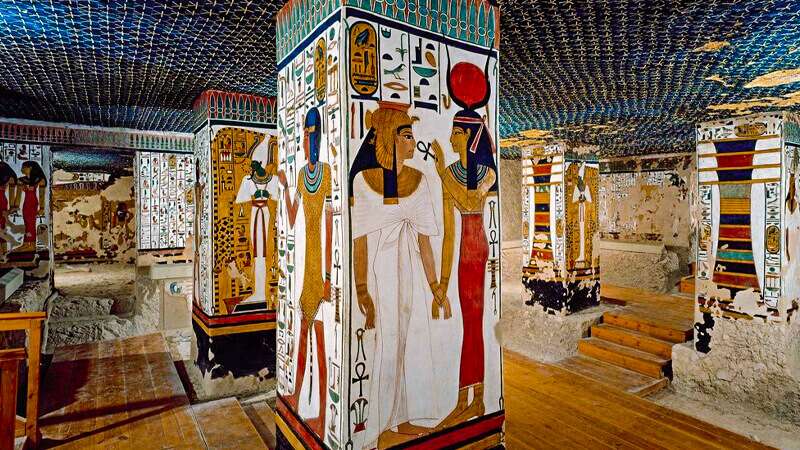
Nefertiri is the wife of Pharaoh Ramses II, and she is his most famous royal wife, and he had married her at a time before he ascended the throne and
she was considered a great queen because of her clear impact on the civilization of ancient Egypt, and Nefertiri ruled for 24 years, and it is likely that
she died At an age that varies between 40-50 years, that is, she died after a reign of about 25 years, and her husband, King Pharaoh Ramses Secondary,
built her the largest and most beautiful tomb found in the Valley of the Queens. It is a distinctive tomb and a wonderful example of ingenious decoration.
A mural that reflects her daily life.
Located in the Valley of the Queens, the Italian archaeologist Ernesto Schiaparelli 1904 AD discovered the tomb of Nefertiri,
and concluded at that time that there were many contents that had been stolen by thieves, and found many things inside,
such as the lid of her coffin, which is made of pink granite.
He also found some beautiful gold and porcelain, and a pair of sandals made of palm fronds. A description of Nefertiri’s tomb
consists of an upper room and a lower burial room, connected by stairs, and drawings on the walls of Nefertiri and a number of gods, insects,
and animals, in addition to hieroglyphic magic spells. These are drawings depicting the passage through the underworld towards eternal life.
As for the temple, it was built only 100 m from the Temple of Ramses II, which is located in Abu Simbel, and this temple was built by order of Ramses II
in her appreciation. The Temple of Nefertari is considered the smallest temple, and it shows a great statue of Nefertiri and Pharaoh Ramses II
and some small statues of royal children next to the two colossal statues. Inside the temple, there is a huge vertical hall containing columns
with carved tops in the form of Hathor’s head.
Tomb of Seti:
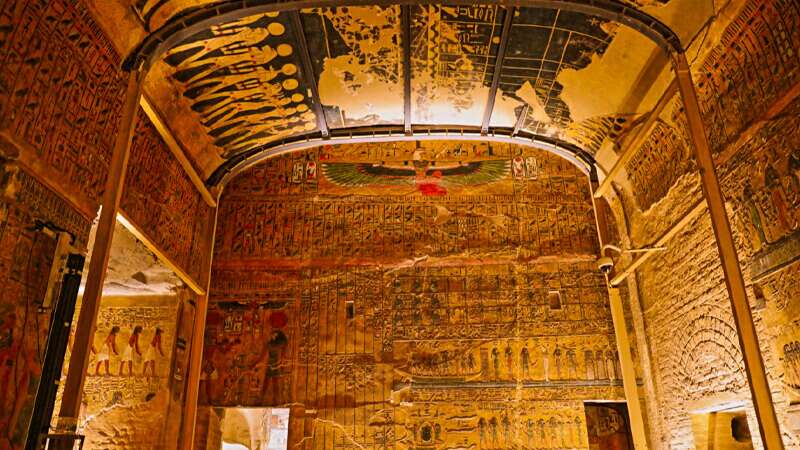
Seti I’s tomb is the longest, deepest, and most beautiful of the Valley of the King’s tombs. It is considered the most important royal tomb,
the largest of which was carved into the rock of the mountain in Luxor (ancient Thebes), and it has drawings of Seti as he worshiped the gods.
Like other tombs in the Valley of the Kings, the tomb of Seti I was decorated with various funerary texts, the purpose of which was to ensure
his successful transition to the underworld. The tomb of Seti I was the first to be fully decorated with texts. The beautiful scenes and inscriptions are distinguished
by the quality and accuracy for which the reign of Seti I was famous. Among the funerary texts inscribed in the cemetery are the texts of the songs of Ra,
the book of Imi Duat, meaning “what is in the other world” and the book of gates, in addition to the Book of the Heavenly Cow and the wonderful astronomical scenes
that decorate the ceiling of his burial chamber, which mimic the night sky.
Temple of Deir al-Bahri (Queen Hatshepsut’s Temple):
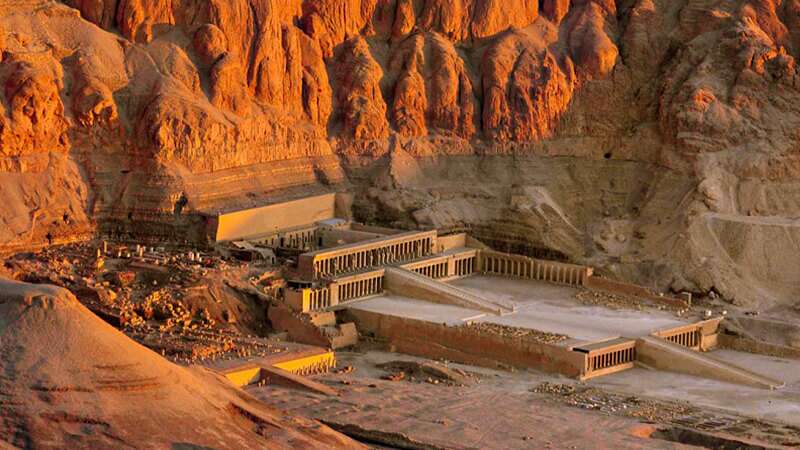
The ancient Egyptians called it the “Bridge of Jisro-Amun”, meaning the Holy of Holies of Amun, built by Queen Hatshepsut on the west
bank of the Nile opposite Thebes (the capital of ancient Egypt and the seat of the cult of Amun) (Luxor today).
The Temple of Hatshepsut is distinguished by its unique architectural design compared to the Egyptian temples that were built on the eastern bank of the Nile in Luxor
The temple consists of three tiered layers at the bottom of the valley, where the funeral rites were held for both Queen Hatshepsut (who received the title of king)
in addition to her father, King Tuthmosis I, where they were presented in offerings to ensure the queen’s soul eternal life in the next world.
The site of the mortuary temple on the western mainland was linked to the idea of sunset, as the journey of the god of the lower sun in the underworld.
This temple was also on the other side from the Temple of Amun in Karnak on the eastern bank, where the statues of the Lord Amun,
his wife Mutt and their son Khonsu were walking in an annual festive procession known as the Beautiful Valley Festival to cross the Nile and
visit the royal funeral temples, including the Temple of Hatshepsut, which was one of the important stations for this procession.
Tomb of Tutankhamun:
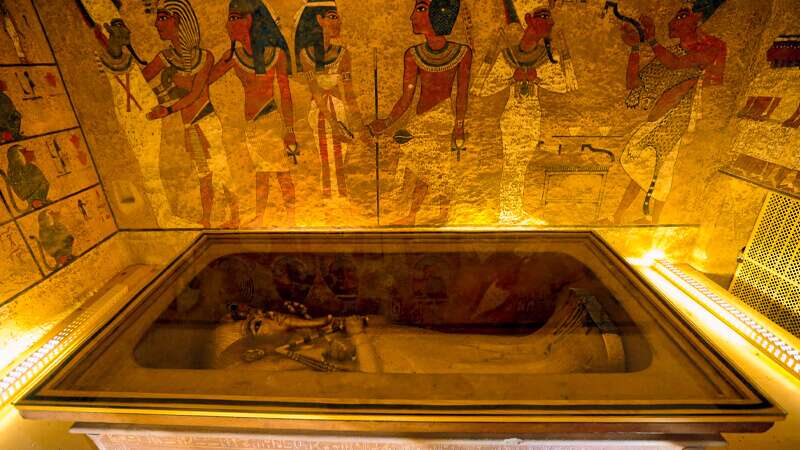
The tomb of King Tutankhamun (1336-1327 BC) of the Eighteenth Dynasty is world-renowned because it is the only royal tomb in the Valley of the Kings
whose contents were discovered relatively intact and complete, giving us an idea of the way of living in the royal palace. The tomb was discovered in 1922 by Howard Carter
He found Tutankhamun’s clothes, gold ornaments, fabrics, a large number of scarabs, and statues, as well as bowls, decorative items, and incense.
He also found pieces of furniture, chairs, oil lamps, toys, food stocks, drinks, golden and pottery vessels, chariots (which were drawn by horses), and equipment. battleship.
Tutankhamun continued to rule for nearly ten years until his death at the age of 18 or 19 and was buried in the Valley of the Kings.
3,500 artifacts were discovered in the tomb of King Tutankhamun. The tomb of King Tutankhamun is considered small compared to the other tombs of kings,
and it was the only tomb that was not looted among the tombs of the kings of the eighteenth and nineteenth dynasties.
The scale of Tutankhamun’s fortunes unearthed is unparalleled because it was one of the only ancient tombs found almost intact – or completely intact.
Among the artifacts: an iron dagger that may have been made from a meteorite after X-ray detection, as well as two young mummies,
genetically determined to be Tut’s children, both stillborn; The famous funeral mask, made of pure gold, is heavier than a bowling ball, but as thin as snakeskin.
Mummification Museum:
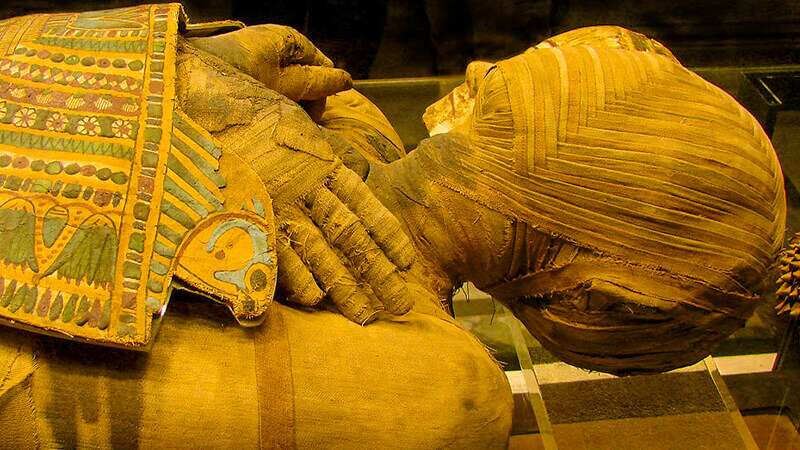
The mummification Museum is located on the Nile Corniche, north of Luxor Temple.
Mummification and the tools used in that process, visceral utensils, mummification deities,
and the cemetery, in addition to displaying groups of protection amulets, a variety of coffins, and funerary paintings. The museum also displays a number of human mummies
and a group of animal mummies such as crocodiles, cats, and fish
The museum has an area of about 2035 square meters and contains the following sections: The exhibition hall: which in turn includes two sections, the first is the ramp,
where there are ten hanging panels that show the details of the funeral procession rituals and the procedures that follow from death to burial
from the reality of an instant papyrus which is displayed in the British Museum, The second one starts at the end of the ramp, in which more than sixty pieces
are displayed in 19 glass display windows.
The Mummification Museum exhibits revolve around 11 main themes (the gods of ancient Egypt – mummification materials – organic materials – embalming fluids – the methods used in the mummification process – Kanon pots). To preserve the internal viscera of the deceased and it took the form of the four sons of Horus, namely “Emst”, “Hapi”, “Dawamotiv”
and “Kebeh Snouf” – Ushabti – amulets – the sarcophagus of Badi Amun – the mummy of Masharti (the son of King Ba Najm I, who was a high priest of Amun and commander of the army)
and it is the only human mummy in the museum – mummified animals).
The mummification process involved many complex steps that took about 70 days and were accompanied by the establishment of many rituals and the recitation of incantations,
where the organs of the deceased are carefully removed through a small incision in his body and kept in jars known as canopic pots, then the body is dried using natron salt,
and finally, It is wrapped in linen wraps, and magical amulets are placed inside the wraps around different parts of the mummy to protect the body,
and finally, the family of the deceased carries his mummy to be placed in a coffin for burial.
Deir el-Medina:
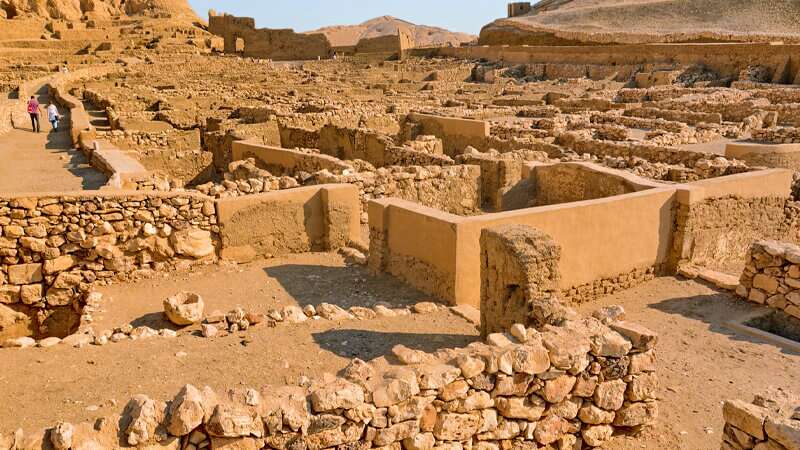
In the city of Luxor, where there is history and archeology, Deir el-Madina is located, and its name itself is strange to the ear as part of the pharaonic history,
but let me assure you that without Deir el-Madina, Karnak and the entire Valley of the Kings and Queens would not exist.
The city of Luxor, where the Temple of Habeshut and the tomb of Ramses, but certainly these kings did not make this visual dazzle, but made for them,
in the hands of skilled Egyptian artists, and industrious workers, and the former pharaohs of the 18th and 20th dynasties were keen on the welfare of artists
and workers a lot so they built these The city, which by their era was very elegant and distinguished.
It is located north of the Valley of the Kings in Luxor, at the Thebes cemetery, where you will find an integrated city called Deir el-Madina.
The fact is that the city did not have a name previously in the Pharaonic era, but it was recently named.
The city is an integrated community of pharaonic houses, ornate tombs, and dozens of small dazzling details, and you will discover that it was a city
that was built to be an integrated residence for workers.
The reason for naming the city, Deir al-Madina is what happened to the temple of the goddess of the pharaohs Hattori,
which was built during the era of the Ptolemies, but with the entry of Christianity to Egypt, churches were not available in this remote place,
so the residents took it as a church for worship and were called the monastery, and therefore the area was referred to as Deir al-Madina, and when
With the discovery of tombs and workers’ homes there The entire area was named after Deir el-Medina.
Temple Of Khonsu:
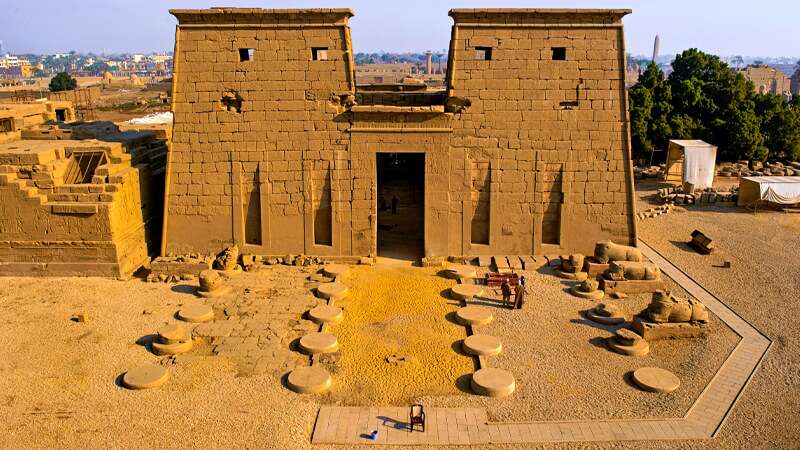
Khonsu was the son of Amun and Mut, who formed the Theban triad with him. He was a moon deity who appeared as a man with a falcon’s head wearing a crescent moon headpiece topped by the complete lunar disc. He is sometimes shown as a baboon, like Thoth, who was also a lunar deity.
Khonsu was said to have the power to drive forth bad spirits. In order to cure his daughter of an illness, Rameses II sent a statue of Khonsu to a sympathetic Syrian ruler.
Ramesses III erected his temple inside the Karnak boundaries; it consists of a peristyle court surrounded by a portico of twenty-eight columns. There is also a hypostyle hall attached to the bark’s sanctuary, with chapels to the left and right and a stairway leading to the roof.
The whole pylon, built, is 113 feet (34.5m) long and 59 feet (18m) tall. On its front, four slots are created to accommodate masts with banners.
In front of the pylon are the remnants of a colonnade surrounded by sphinxes.

